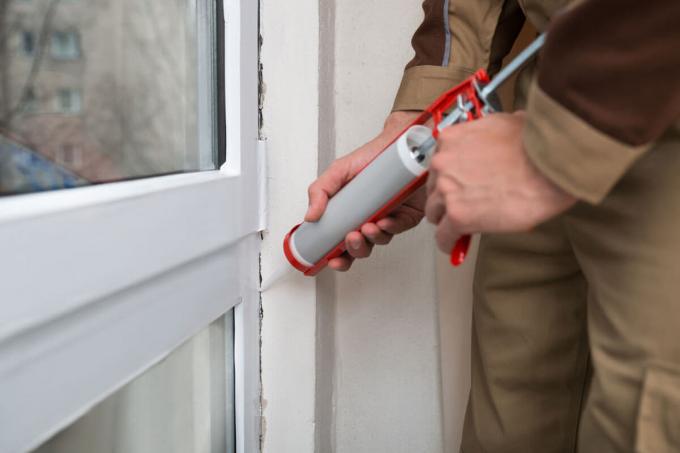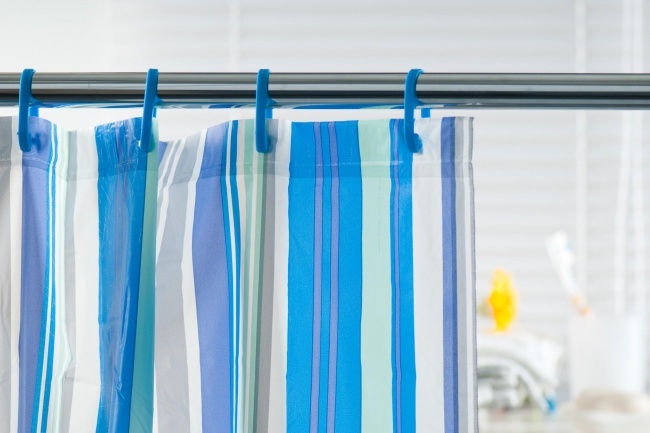Content
- 1 Quality
- 2 Steel
- 3 Convenience. Which one to take?
- 4 The handle and its importance
This article is devoted to the choice of a knife for everyday, household use. Even, one might say, for "home". Here we will talk about a knife that almost never gets out of the kitchen table. About who is taken in the first place, regardless of what is planned to cook.
You should start with the basic criteria that a knife possesses, since first you need to decide on the quality, and then choose a model that is convenient for yourself. Moreover, if you choose a knife without quality, there will be no convenience, and without convenience there will be no safety. The main thing that a knife should have is strength. Two things affect durability. First of all, the design. The second is the quality of materials.
If the quality of materials is difficult for us to determine by eye, then with the design everything is much simpler. The main thing worth paying attention to is attaching the blade to the handle. The metal should go as deep as possible into the handle, and it will not be worse if the metal ends where the handle is. This means a large grip area, which means more strength.

The blade goes into the handle a little
Next, you should pay attention to the hardness of the steel, it can be indicated on the marking, you can ask the seller about it. I advise you to take 47 units, which is usually the maximum hardness for a kitchen knife. Usually, but there are samples with much higher hardness. I would not recommend them due to the impossibility of sharpening such a knife at home. And also, a big minus of such knives is fragility on impact.
If we take a knife of not the greatest hardness, then it is desirable that the thickness of the blade was about 1.5 or 2 mm, so that the knife is strong and not subject to bending.
Then you can move on to usability. In terms of shape, it is best to take a knife from the "chef" class. These are rather large knives, they do 90% of the work during cooking. Plus them in a downward-protruding blade.

This knife does not have a blade protrusion, so it differs from a knife like "Chef"
When cutting, the fingers do not interfere with the knife completely lie on the cutting board, which means that they do not interfere with cutting to the end of the food, as well as this protrusion serves as a stop for the finger, preventing the hand from slipping on blade. If the "chef" seems bulky to you, you should pay attention to the "santoku" - also a chef's knife, but Japanese - they are smaller, but not worse in functionality.
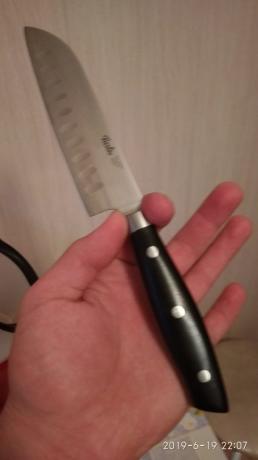
Favorite Japanese Santoku
Last but not least is the thickness and ergonomics of the handle. The handle should not be too thick or too thin. When squeezed, the fingers should easily reach the palm, but should not rest too much on it.
For the rest, you just need to take the knife in your hand and feel the degree of convenience. You need to choose the one that you like the sensations. A knife is still an individual thing, and your preferences in choosing, in addition to the basic parameters, should depend on your physiological characteristics and cutting technique.
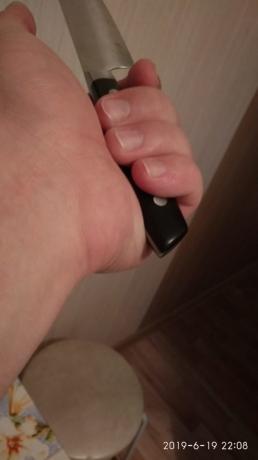
How the handle should lie in the hand
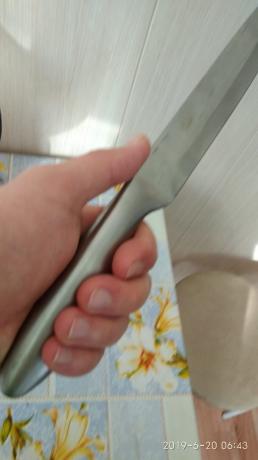
And how it shouldn't
